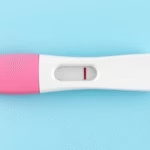Understanding Heavy Implantation Bleeding
Heavy implantation bleeding refers to significant spotting or bleeding that some women experience when a fertilized egg attaches itself to the lining of the uterus. This process typically occurs around 6 to 12 days after conception. For many, this can raise questions, especially when considering the potential for a continued pregnancy. It can be concerning to witness unexpected bleeding, leading to questions like “has anyone had heavy implantation bleeding and still was pregnant?” Identifying differences between normal menstrual spotting and what may be implantation bleeding is crucial for women who are trying to conceive.
Implantation bleeding is typically lighter than a period, often color-coded as pink or brown rather than the bright red of menstrual blood. However, in some instances, the bleeding may be heavier, giving rise to confusion or concern. Understanding that every body is unique and that experiences can differ greatly, leads to the realization that heavy implantation bleeding may occur without it signaling the end of a pregnancy. Many women have successfully carried pregnancies to term despite experiencing heavier-than-normal implantation bleeding.
Recognizing the Symptoms of Implantation Bleeding
Recognizing the symptoms of implantation bleeding can help differentiate it from other types of bleeding, including menstruation. Typical signs include:
- Timing: Occurs 6 to 12 days post-ovulation.
- Color: Generally light pink or brown compared to the bright red of menstrual blood.
- Flow: Lighter flow than a typical period; often described as spotting.
- Duration: Lasts from a few hours to three days.
Many women report light spotting during this period and could confuse it with early menstruation. It is essential to track any unusual symptoms and seek medical guidance when necessary. Heavy implantation bleeding, while less common, does not automatically indicate a miscarriage or outdated pregnancy.
Possible Causes of Heavy Bleeding During Implantation
Heavy bleeding during implantation can stem from various factors. Understanding these potential causes can help women discern their circumstances:
- Hormonal Fluctuations: Hormonal changes occurring during early pregnancy can sometimes lead to unusual bleeding.
- Miscarriage: Identifying whether the bleeding is indeed implantation or possibly the onset of a miscarriage.
- Uterine Structural Issues: Conditions like fibroids or polyps can affect bleeding patterns.
- Infection: Infections or conditions affecting the uterus can produce bleeding mimicking implantation bleeding.
It is essential to talk to a medical professional if unusual bleeding occurs, particularly if accompanied by pain or other symptoms. Awareness and understanding of these factors prepare women to navigate their experiences more effectively.
When to Seek Medical Attention
Knowing when to seek medical attention for heavy bleeding is critical. Consider the following circumstances:
- If bleeding remains heavy and persists beyond a couple of days.
- Experience of severe abdominal pain or discomfort.
- Presence of large clots in the bleeding.
- If symptoms are accompanied by dizziness or fainting.
Medical professionals can offer reassurance and guidance on whether the bleeding signifies a problem or is a normal occurrence. Regular check-ups and open discussions with healthcare providers about previous pregnancies can contribute to a better understanding of personal health and experiences.
How Heavy Implantation Bleeding Can Affect Pregnancy
The relationship between heavy implantation bleeding and successful pregnancy outcomes varies widely among individuals. Many women report having had heavy implantation bleeding and still maintaining healthy pregnancies. Factors that could impact this include:
- Overall health and wellness during pregnancy.
- Presence of underlying health conditions.
- Patient history with prior pregnancies.
Each pregnancy presents unique challenges and considerations. It’s vital for women experiencing heavy bleeding to monitor their health and communicate openly with medical professionals. Regular prenatal care often supports successful outcomes, even for those with heavy implantation bleeding.
Understanding Miscarriage vs. Implantation Bleeding
Miscarriage often features heavier, bright red bleeding with cramping, while implantation bleeding is usually lighter in flow and different in color. Recognizing these differences can significantly reduce anxiety during early pregnancy. Women may benefit from the following:
- Keeping a journal to track bleeding patterns and accompanying symptoms.
- Scheduling evaluations with healthcare professionals for screenings or guidance.
- Avoiding self-diagnosis based solely on experiences; each woman’s body behaves uniquely.
Understanding these nuances allows women to differentiate between normal early pregnancy signs and potential complications. Proper education and support are essential in addressing concerns that may arise.
Support and Resources for Expecting Mothers
Support systems play a vital role in navigating heavy implantation bleeding. Women benefit from seeking guidance from:
- Healthcare providers for accurate medical assessments.
- Support groups or online forums to connect with other women with similar experiences.
- Educational resources about pregnancy that empower confidence in expecting mothers.
Education can provide reassurance, while shared experiences cultivate understanding within communities. Knowing where to turn during uncertain moments can ease fears associated with bleeding during early pregnancy.
Final Thoughts
Experiencing heavy implantation bleeding can be alarming for many women eager to welcome a new life. It is essential to remember that everyone’s experience with pregnancy is distinct. Instances of heavy implantation bleeding do occur, and many women go on to have healthy pregnancies despite such occurrences. Seeking medical guidance is vital to ensure that any atypical symptoms are addressed and understood. Women should stay informed about their bodies and trust their instincts when navigating pregnancy challenges.
Monitoring symptoms and maintaining communication with healthcare professionals will significantly contribute to better pregnancy experiences, regardless of initial concerns. Balancing awareness with self-advocacy becomes crucial in managing feelings during this exciting yet sometimes daunting time.
Frequently Asked Questions
1. Can I still be pregnant if I experience heavy bleeding? Yes, many women have experienced heavy implantation bleeding and continued their pregnancies successfully. Consult a healthcare professional if concerned.
2. What color is implantation bleeding? Implantation bleeding typically appears light pink or brown, contrasting with menstrual blood, which is usually bright red.
3. How long does implantation bleeding last? It generally lasts from a few hours to three days, depending on the individual.
4. Is heavy implantation bleeding a sign of miscarriage? Not necessarily. While heavy bleeding can indicate a problem, many women with heavy implantation bleeding go on to have healthy pregnancies.
5. When should I see a doctor for bleeding during pregnancy? Seek medical attention if bleeding is heavy, lasts longer than a few days, or is accompanied by severe pain or other concerning symptoms.
Further Reading
What Type of Psychotherapy Is Best for Anxiety?







